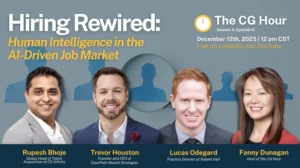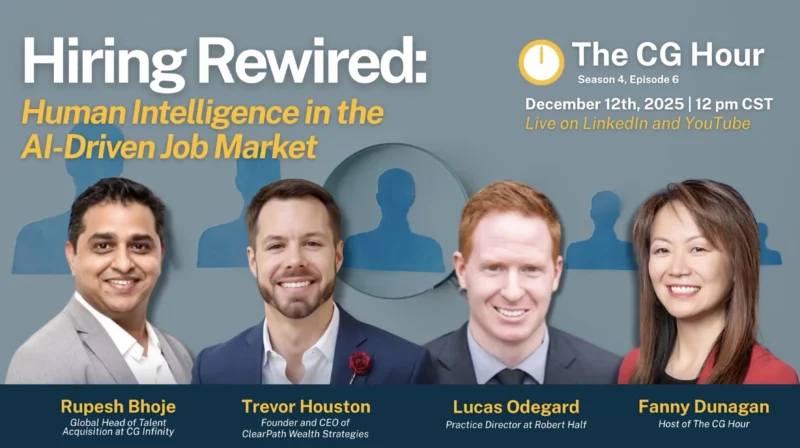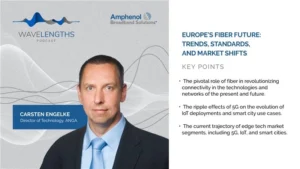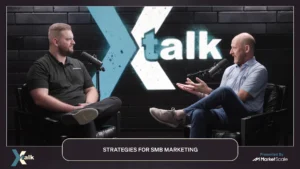Marketing from the Palm of your Hand with Beibei Dong, Associate Professor of Marketing at Lehigh University
Traditional marketing has evolved; companies no longer are the ones providing value for their customers. Instead, consumers are getting to craft a company’s identity, becoming the value-adders themselves. On today’s podcast from our Digital Marketing University Series, we were joined by Beibei Dong, Associate Professor of Marketing at Lehigh University. She spoke on the changes that smart technology is bringing to marketing strategy and the ways it is shaping how consumers interact with brands directly. With the advancement of technology, companies must find ways to engage potential customers or become stale and obsolete.
“If you really think about today’s world, so the digital technology has really stressed on the importance about like customer engagement because now customers are active co-producers or sometimes even destroyers of value for companies,” Dong said.
Dong lays out examples from some of the world’s largest brands, including Walmart, McDonald’s and Doritos to explain how technology is changing their experience and business model. Consumers are now more tied to brands than ever before, and the ones who are letting their customers have a stake in the company direction are making a mark.
HIGHLIGHTS FROM THE EPISODE
Sean Heath: Now I’m very interested in an interesting development specifically the retail restaurant hospitality industries and that is the change and the relationship that customer engagement is undergoing because of digital media. Can you talk to me about how that technology is really changing the way the whole interaction occurs?
Beibei Dong: Yes, sure. So if you really think about today’s world, so the digital technology has really stressed on the importance about like customer engagement because now customers are active co-producers or sometimes even destroyers of value for companies. So for example, if we go back to the old days, you think about marketers. We think ourselves are the ones who provide the best values to our customers, but now the entire paradigm has shifted. Now we think more about, “How can we engage our customers to create values for themselves?”
So the low side, you can see like many interesting phenomenon that the restaurant industries or the retail industries are already doing. If you think about yourself going to Walmart, like you do yourself checkout, so that would be one example about how companies are looking for ways to outsource labors to customers. So then we see that happening in the retailer business, that happens in the restaurants, and actually interestingly like in 2018, this year I would say like kind of revolutionary because self-service technologies have been already going on for a while. But interestingly this year, most of the major companies have announced their expansion. They want to do more.
So for example, like Walmart has launched many new Scan & Go Program at stores nationwide and similarly like McDonalds and the Wendy’s both announced that they are going to almost make like 50 percent of their restaurants using self-ordering kiosks. So by seeing that, the very good point is like now they can have customers do all the checkouts for themselves, which could substantially reduce their waiting time because there are more lanes opening up now, and it actually substantially improved the customer shopping experience as well.
And even like McDonalds was saying like, “When we put in those self-ordering kiosks, we can actually add in more time and the service for like table service.” So they can actually delegated their employees to provide a customer service, which is not quite normally expected in fast food like a restaurant chain. Well, that’s on the low end that a company think about, “Okay, how can I utilize consumer resources to be my endless labor?” But on the high end, retailers are really looking for high-tech options to offer more digitalized retail experience.
SH: There is a danger in going too far to the digital side. It probably is not a healthy decision for a company to abandon traditional marketing and media, right?
BD: That’s true. Yeah. So that’s a very good point. So like the Walmart example I was talking about, like the Scan & Go Program. So they actually introduced that program a couple of years ago. And then by that time, it was a pilot in some of the stores and it wasn’t very successful. So there was even a time period. Walmart was saying that, “We are actually want to cut in back all the self-checkout lanes.” I think that was before Thanksgiving because they inspect a lot of shopping going on, they will say, “Okay, we’ll go back to the human cashier interactions.” But regardless we like it or not, the trend is moving up. Like you think about Amazon has its Amazon Go. They opened a new store in Seattle that’s completely digitalized.
Well, companies, they need to do that but at the same time, they need to be very careful about doing it because there were a lot of issues here where the customers like it or not, they are ready for it or not, the desire of the technology itself needs to be really thought through, like you cannot have like more than six steps on your first screen. So there were a lot of nice things, small things that they need to really think through before they actually can launch these types of programs.
SH: Are smartphones the driving force behind the majority of these changes? Is that technology what is forcing the hand of the industry?
BD: That’s a very good question. It is. I would say that actually make the things become more pleasant. So I’m not sure whether you have the experience or not like Marriott. They have those new like self-checking using your mobile phone. So before we launch all those technologies, the downside about it is like when consumers show like a resistance to it is more about like the convenience of doing it, the extra cost they have put in as labor effort, but a mobile phone makes things become much simpler and easier. It’s just like one click. And because the relationship, you know, we as consumers with mobile, mobile phones are so close. This makes it a big easy step to actually interpreting that market.
SH: It feels as if the technology that is in the customer’s hands is really starting to change that conversation of who defines a company’s brand.
BD: Exactly. That’s a very good point. So if you think about, like we as marketers, almost like every day we are thinking about ways, “How can we send a message about what our brand is to our customers?” But nowadays consumers are much more empowered largely by the social media or largely by the mobile phone, largely by how easy they have the access to the apps on their phone and on the internet. Consumers are defining what a brand is. So there were like things about like if you want to know what is your brand, Google it, the reason is because then you can find all the answers on the webpages from social media and the consumers are largely talking about the stories. So that’s why marketers nowadays have to be really careful. On the one hand, if there is any small incidence, it’s going to be a big news on social media very soon. I think you and I could learn that by heart, right? And on the other hand, consumers are also important to influencers.
So in the old days, when we talk about marketing, we look at customers who can bring the most value to the companies, who shop the most, who spend the most to the company. Now, we look at who are the strongest influencer to the market. So in other words, even someone who does not shop a lot in my company, in my business, but if he’s like an opinion leader, a social leader who’s really active on the social media interface, that could be a really powerful influencer to actually market my brand. So in that sense, it’s really the customers who actually are taking part of the brand development responsibilities for the company.
SH: One of the challenges that comes along with the increase in technology is while it does make things possible that were not previously possible, it also brings in additional set of challenges specifically privacy concerns. As we become more connected digitally to the companies that we work with, we’re generating a lot of data. We’re giving up a lot of information about ourselves. That is something that can make consumers nervous. Some of the companies that are doing a fairly good job at that are noticeable. But what’s really noticeable is when you have a company that has a data breach, a company that’s not protecting that information. Just how critical is security in safeguarding customer’s information as far as the life of a company? Can a data breach be a death sentence for a company?
BD: Yes, I think so. I think over the years, so we as consumers, we probably are not aware of that how much data are collected every second about us. And this is especially because of the digital boom in here. So think about every device we’re using now, every smart device we are using, we’re putting our house, we’re putting our living room and our kitchen is a data generator. We’re probably even not aware of how much data we have been actually collecting when we just turn on our Smart TV.
So that’s the part, that’s the benefit of big data because companies when they collect all those data, they can do marketing in a much more efficient and effective way. They know really well our customers and they can help them to tailor their business programs, marketing promotions really effective so you only get the promotions that are really beneficial to you. But on the other hand, I think because of the issue, the debate we have now about data breach, consumer started being increasingly concerned about how much data are collected and then how much data are collected in a known fashion, like if I know, and instead of like everything is in the background of my smartphone, my Smart TV.
So that would be a tipping point for companies and they have to deal with it by understanding the point because that’s going to be a decision factor in the future when customers decide, “Okay, who’s the provider I’m going to actually buying product with or buying service with?”
SH: This constant digital connection that we starting to live with is responsible for two types of data generation. There’s the passive data generation that you mentioned, all of our personal details, our likes, our dislikes, our tendencies, but there’s another type of data that’s generated and that is the intentional data. That is the user-generated content. How are companies taking advantage of including their users in content generation?
BD: Very good point. So if you think about here, like we just talked about like with the tech, the empowerment of technology, customers are much more engaged like in the brand development. In that sense, companies have to look at the user-generated content. By saying user-generated content, we are saying like it could be any information, insights, preferences generated by the user and intentionally. So we have found many good examples that companies are exploring the idea. So it could be as simple as you invite your customers in your new product development like the example about Lego. They actually asked customers to share those Lego ideas or it could be you have your customers doing all the service themselves for you or even on the higher end, you can have customers design marketing campaign for you.
Like the example about like Doritos, they have their “Crash the Super Bowl” contest is one of the most exciting campaign I think for consumers who really are passionate about like advertising because that’s the moment, it’s a very valuable moment that you get the opportunity actually to run those marketing campaigns by yourself, by competing with those like big time. And also like the example of Lay’s, they do that “Do us a Flavor” Campaign. That was like a very well-known campaign, but the really nice part of it is that they’re not just using consumers to spread the word of mouth. They’re doing more than that. They engage the customers in multiple data points of their product development and the launch into the market.
SH: The primary data point or access point that most companies have to us that you and I have already talked about is our smartphone.
BD: Right.
For the latest news, videos, and podcasts in the Software & Electronics Industry, be sure to subscribe to our industry publication.
Follow us on social media for the latest updates in B2B!
Twitter – @TechMKSL
Facebook – facebook.com/marketscale
LinkedIn – linkedin.com/company/marketscale









